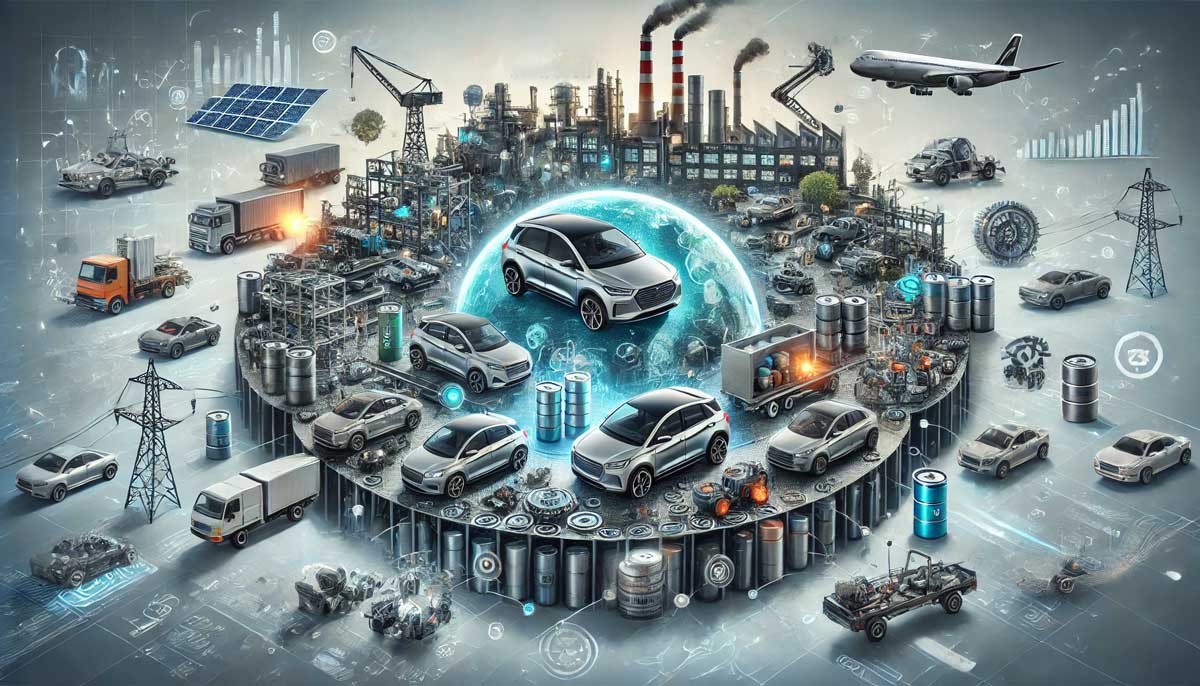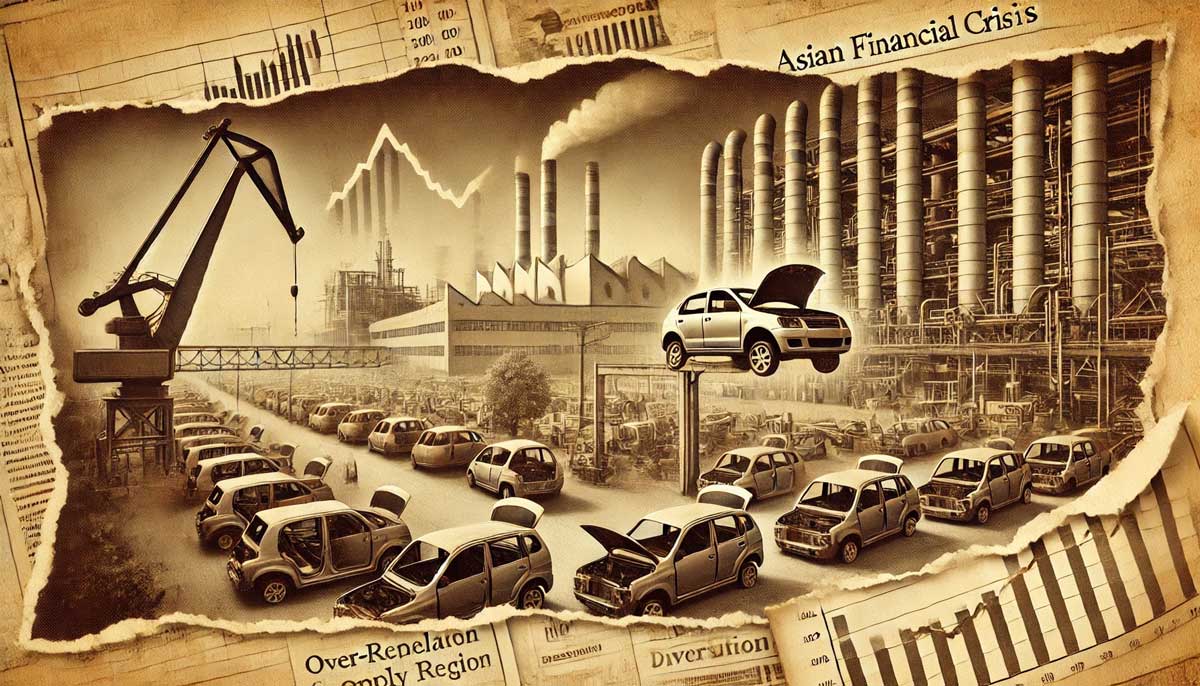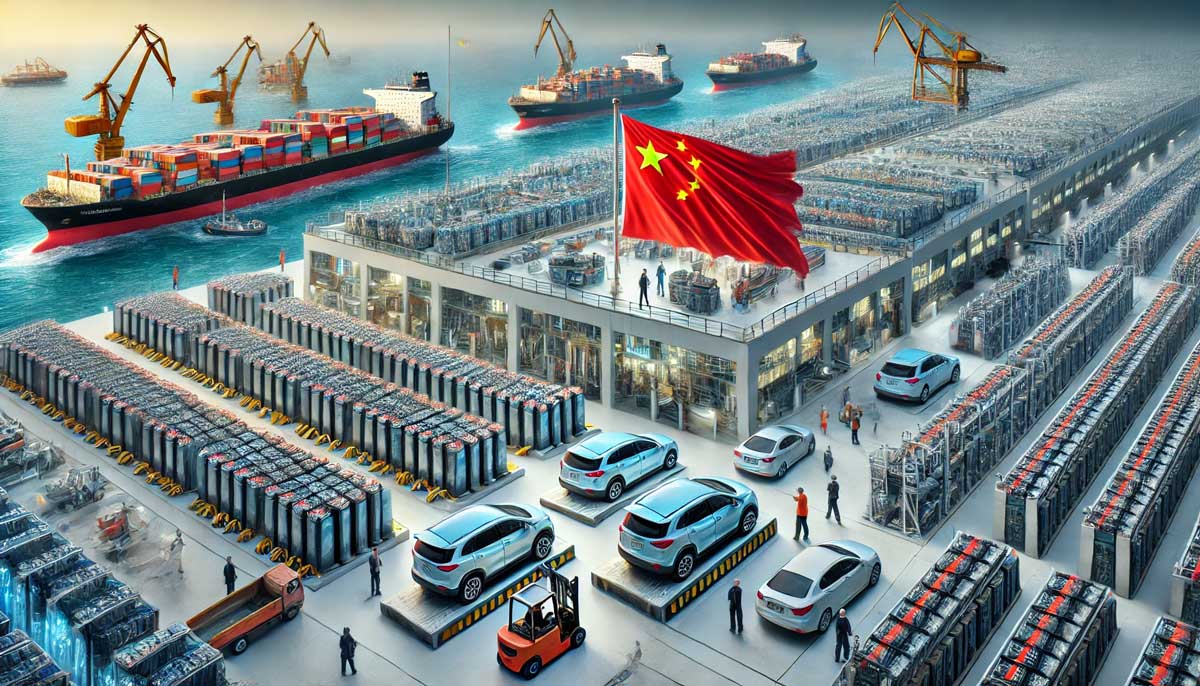Best Practices Articles

Transformation of the Automotive Partner Ecosystem
Part 2
The automotive partner ecosystem has undergone significant transformations over the past few decades, driven by globalization, economic crises, technological advancements, and the rise of Electric Vehicles (EVs). This part of the article delves into the factors that have reshaped the industry, focusing on how these changes have impacted the relationships between automakers and their suppliers and what this means for the automotive sector's future.
The Globalization of the Automotive Industry
Globalization has been one of the most defining trends in the automotive industry over the past 50 years. As automakers sought to optimize costs and access new markets, they increasingly turned to a global network of suppliers. This shift toward globalization allowed companies to benefit from lower labor costs, access specialized expertise, and source materials from the most cost-effective regions.
One of the most significant impacts of globalization on the automotive partner ecosystem was the spread of just-in-time (JIT) manufacturing practices. Originally pioneered by Toyota in Japan, JIT aims to reduce inventory costs by receiving parts only when they are needed for production. This approach requires a highly coordinated and responsive supply chain, where suppliers must deliver components with precision timing to keep production lines running smoothly.
The adoption of JIT manufacturing by automakers around the world led to a more interconnected and interdependent global supply chain. Suppliers were often located in different countries, with components being manufactured in one region, assembled in another, and sold in markets worldwide. This globalization of the supply chain allowed automakers to achieve greater efficiencies and reduce costs, but it also introduced new challenges, such as increased logistics complexity and vulnerability to disruptions.
The Impact of Economic Crises on the Automotive Supply Chain
The automotive partner ecosystem has been tested by several economic crises over the past few decades, each of which has exposed the vulnerabilities of the global supply chain and forced companies to adapt.
The Asian Financial Crisis of the late 1990s was one of the first major shocks to the global automotive industry. As the crisis unfolded, demand for vehicles in Asia plummeted, and many regional suppliers faced financial difficulties. This crisis highlighted the risks of over-reliance on specific regions for crucial components. It led to a diversification of supply chains as automakers sought to reduce their exposure to regional economic shocks.
The Global Financial Crisis 2008 was another pivotal moment for the automotive partner ecosystem. The crisis led to a sharp decline in vehicle sales, pushing many automakers and suppliers to bankruptcy. In response, companies across the industry were forced to restructure their operations, focusing on core competencies and divesting non-essential businesses. This restructuring often involved renegotiating contracts with suppliers and seeking more favorable terms to reduce costs and increase flexibility.

The Global Financial Crisis also accelerated the trend of consolidation within the automotive supply chain. Many smaller suppliers could not survive the downturn, leading to a wave of mergers and acquisitions as larger companies sought to strengthen their positions in the market. This consolidation resulted in a more concentrated supply chain, with fewer but larger suppliers dominating.
The COVID-19 pandemic, which began in 2020, further exposed the fragility of the global automotive supply chain. The pandemic led to widespread factory shutdowns, disruptions in logistics, and shortages of critical components, such as semiconductors. These disruptions had a ripple effect throughout the industry, leading to delays in vehicle production and highlighting the need for greater resilience in the supply chain.
In response to the pandemic, many automakers and suppliers began rethinking their supply chain strategies with a renewed focus on resilience and flexibility. This has increased interest in nearshoring and reshoring, where companies move production closer to their home markets to reduce the risk of disruptions. Additionally, there has been a greater emphasis on building more robust supplier relationships and improving transparency throughout the supply chain.
The Rise of Electric Vehicles and the Shift in the Automotive Partner Ecosystem
The transition from Internal Combustion Engine (ICE) vehicles to Electric Vehicles (EVs) represents one of the most significant shifts in the history of the automotive industry. This transition is changing the types of cars produced and transforming the entire automotive partner ecosystem.
One of the most significant changes brought about by the rise of EVs is simplifying the supply chain. Unlike ICE vehicles, which have thousands of moving parts, EVs are simpler machines. They have fewer mechanical components, such as exhaust systems and transmissions, reducing the need for traditional automotive suppliers.
This shift has forced many traditional suppliers to adapt to the new reality or exit the market altogether. Companies specializing in ICE vehicle components, such as engine parts and exhaust systems, have seen declining product demand. In contrast, suppliers focusing on EV-specific components, such as batteries and electric motors, have seen a surge in demand.
The rise of EVs has also led to the emergence of new players in the automotive partner ecosystem. Battery manufacturers, in particular, have become critical partners for automakers, as the battery is the most expensive and vital component of an EV. Companies like LG Chem, Panasonic, and CATL have become key suppliers to the automotive industry, providing batteries to major automakers like Tesla, General Motors, and Volkswagen.
Besides battery manufacturers, the rise of EVs has created opportunities for companies to develop charging infrastructure. As more consumers adopt EVs, the demand for charging stations increases, leading to new partnerships between automakers, energy companies, and technology firms. These partnerships are helping to build the infrastructure needed to support the widespread adoption of EVs and are creating a new ecosystem of suppliers and partners.
The Growing Importance of Software in the Automotive Ecosystem
As the automotive industry has shifted towards EVs, the focus has increasingly moved away from mechanical components and software. Modern vehicles, particularly EVs, are as much about software as hardware. This shift has led to a new partner ecosystem centered around software development.
Software is critical in EVs, from battery management systems and autonomous driving technology to infotainment and connectivity solutions. This has created opportunities for tech companies and startups to become essential players in the automotive industry, often collaborating directly with automakers to integrate advanced software into their vehicles.
For example, companies like Google, NVIDIA, and Mobileye are working with automakers to develop autonomous driving technology requiring sophisticated software and hardware integration. These partnerships are essential for developing self-driving cars, as the software that controls the vehicle’s sensors, cameras, and radar systems must be seamlessly integrated with the hardware to ensure safety and reliability.
The growing importance of software has also led to new types of partnerships within the automotive partner ecosystem. Automakers increasingly work with tech companies and startups to develop new vehicle features and services. These partnerships often involve collaboration on everything from software development to data analytics and cybersecurity.
The shift towards software-centric vehicles also changes how automakers approach innovation. In the past, innovation in the automotive industry was primarily driven by advances in mechanical engineering and manufacturing processes. However, much of the innovation is happening in the software and technology, with companies developing new ways to enhance the driving experience, improve safety, and reduce emissions.
The Impact of State Capitalism on the EV Supply Chain
Another significant factor in transforming the automotive partner ecosystem has been the role of state capitalism, particularly in China. The Chinese government’s significant investments in the EV sector have profoundly impacted the global supply chain, particularly in the production of batteries.
China is home to many of the world’s largest battery manufacturers, and its control over critical minerals like lithium and cobalt has allowed it to dominate the global battery market. The Chinese government has also provided substantial subsidies to domestic EV manufacturers, helping them become global market leaders.
The influence of state capitalism in the EV supply chain has created opportunities and challenges for automakers and suppliers worldwide. On the one hand, the availability of affordable batteries from Chinese manufacturers has helped drive down EVs' costs, making them more accessible to consumers. On the other hand, the concentration of battery production in China has created supply chain vulnerabilities, as automakers must navigate geopolitical risks and potential trade disruptions.

To mitigate these risks, some automakers are exploring alternative sources of materials and investing in new battery technologies. For example, Tesla has announced plans to develop its battery cells and secure supplies of raw materials from sources outside of China. Automakers are forming partnerships with battery manufacturers in other regions, such as Europe and North America, to reduce their reliance on Chinese suppliers.
As the EV market continues to grow, the influence of state capitalism on the global supply chain is likely to increase. Governments worldwide recognize the EV sector's strategic importance and invest in domestic manufacturing capabilities to compete with China. This trend will likely lead to further changes in the automotive partner ecosystem as companies seek to secure their supply chains and maintain a competitive edge in the global market.
Read the 1st part on "The Evolution of the Automotive Partner Ecosystem"
Best Practices Guidebook
 How to Start and Scale Partner Ecosystems Best Practices
How to Start and Scale Partner Ecosystems Best PracticesDownload Guide
 The Evolution of PartnerOps: Past, Present & Future Best Practices
The Evolution of PartnerOps: Past, Present & Future Best PracticesDownload Guide
 Mastering Channel Sales: Strategies, Best Practices, and Growth Tactics for 2025
Mastering Channel Sales: Strategies, Best Practices, and Growth Tactics for 2025Download Guide
 Winning with Partner Advisory Councils: Best Practices for Partner Engagement & Growth
Winning with Partner Advisory Councils: Best Practices for Partner Engagement & GrowthDownload Guide
 The Future of Partner Ecosystems Best Practices
The Future of Partner Ecosystems Best PracticesDownload Guide
 The AI Revolution: How Technology and Talent are Shaping the Future
The AI Revolution: How Technology and Talent are Shaping the FutureDownload Guide
 Top 105 Partner Management Metrics that Matter Best Practices
Top 105 Partner Management Metrics that Matter Best PracticesDownload Guide
 Mastering PRM Integration Best Practices
Mastering PRM Integration Best PracticesDownload Guide
 Building a Sales Partner Portal with Salesforce Best Practices
Building a Sales Partner Portal with Salesforce Best PracticesDownload Guide
 Building and Managing Partner Ecosystems Best Practices
Building and Managing Partner Ecosystems Best PracticesDownload Guide
 Mastering Co-Marketing and Co-Selling Best Practices
Mastering Co-Marketing and Co-Selling Best PracticesDownload Guide
 Transforming Partner Ecosystems Best Practices
Transforming Partner Ecosystems Best PracticesDownload Guide
 Mastering Partner Ecosystems Best Practices
Mastering Partner Ecosystems Best PracticesDownload Guide
 Mastering Partner Onboarding Best Practices
Mastering Partner Onboarding Best PracticesDownload Guide
 Partner Ecosystem Management Best Practices
Partner Ecosystem Management Best PracticesDownload Guide
 B2B Marketing in the Age of Intelligence Best Practices
B2B Marketing in the Age of Intelligence Best PracticesDownload Guide
 Multi-Partner Co-Selling Best Practices
Multi-Partner Co-Selling Best PracticesDownload Guide
 A Guide to Enhance Channel Sales Efficiency
A Guide to Enhance Channel Sales EfficiencyDownload Guide







